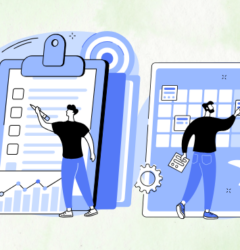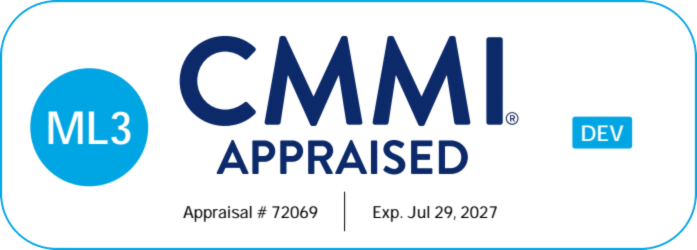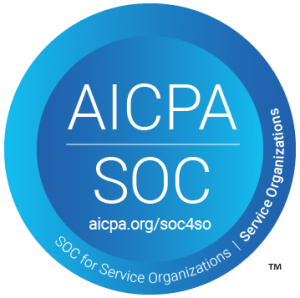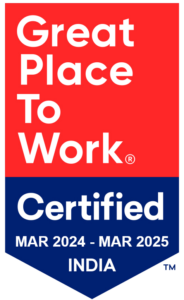
Think about the last time a project missed its deadline. Maybe communication broke down, maybe the goals shifted halfway through, or maybe no one had real-time visibility into progress. Whatever the reason, the root cause often comes down to one thing — poor planning.
Project planning has always been the heart of successful execution. But in 2026, it’s no longer a static document or a one-time kickoff exercise. It’s a living, evolving process — one that integrates automation, analytics, and adaptability into every stage.
Whether you’re a project manager handling enterprise-scale operations or a team leader running smaller initiatives, your ability to plan effectively now defines how well your organization can execute, pivot, and thrive.
Let’s explore what project planning really means today, what makes it work, and how you can set your next project up for success — step by step.
What is Project Planning?
Project planning is the process of turning an idea into an actionable roadmap. It’s where objectives become tasks, resources get aligned, and timelines start taking shape.
At its core, project planning involves defining:
- What needs to be done
- Who will do it
- When it needs to happen
- How success will be measured
But modern project planning goes far beyond just schedules and checklists. In 2026, planning is intelligent, collaborative, and dynamic. Digital platforms allow teams to create connected workflows, automate repetitive steps, and adapt plans instantly as situations evolve.
In simple terms — it’s about bringing order to complexity while leaving room for agility.
Why Project Planning Still Matters (More Than Ever)
The world of work has changed — hybrid teams, global operations, and rapid technological evolution have made project environments more unpredictable. That’s exactly why thoughtful planning is critical today.
Here’s why:
- It Builds Clarity and Direction
A good plan answers the “what, why, and how” of your project before work begins. It ensures that everyone knows the goal and how their role contributes to it. - It Boosts Efficiency
Teams waste less time figuring things out when the roadmap is clear. Tasks, responsibilities, and deadlines are transparent from day one. - It Reduces Risk
Identifying potential pitfalls early gives teams time to prepare. Planning allows you to anticipate what could go wrong and build contingency measures. - It Improves Accountability
When ownership is clearly defined, it’s easier to track performance and ensure deliverables are met on time. - It Increases Stakeholder Confidence
Executives, clients, and partners trust plans that are structured and data-driven. It communicates professionalism and reliability.
In short, effective project planning sets the tone for everything that follows — from collaboration to execution to reporting.
Although overall adoption remains limited, studies show that 77% of high-performing projects use project management software, proving its strong impact on successful delivery.
Key Components of a Strong Project Plan
Every successful plan, regardless of industry or size, shares a few common elements. Let’s break them down:
1. Clear Objectives
Every project starts with a purpose. What problem are you solving? What outcome do you expect? Objectives should be SMART — Specific, Measurable, Achievable, Relevant, and Time-bound.
2. Defined Scope
Scope outlines the boundaries of your project — what’s included, and what’s not. This helps manage stakeholder expectations and prevents scope creep later on.
3. Timeline and Milestones
A timeline brings order to the chaos. Setting milestones helps monitor progress and maintain motivation. In 2026, dynamic scheduling tools allow real-time updates and automated adjustments.
4. Budget and Resources
A clear view of available time, people, and money ensures realistic planning. Allocating resources efficiently prevents overloading and burnout.
5. Risk Management Plan
Even the best projects face risks — from technology delays to changing priorities. Identifying these early helps teams respond proactively rather than reactively.
6. Communication Strategy
Strong communication is non-negotiable. From daily stand-ups to progress dashboards, transparent communication keeps teams and stakeholders aligned.
The Step-by-Step Project Planning Process
Planning isn’t just documentation; it’s a process that connects strategic intent to daily execution. Here’s a step-by-step guide to building a robust project plan:
Step 1: Identify Objectives and Outcomes
Start by defining what success looks like. Is it on-time delivery, cost savings, higher customer satisfaction, or process improvement? Clear objectives keep everyone moving in the same direction.
Step 2: Engage Stakeholders Early
Your stakeholders — clients, team members, sponsors — shape the success of your plan. Engage them early to gather insights, clarify expectations, and build buy-in.
Step 3: Break Down the Work
Large goals can be overwhelming. Use a Work Breakdown Structure (WBS) to divide deliverables into smaller, manageable tasks. This simplifies scheduling and resource allocation.
Step 4: Develop the Schedule
With tasks defined, set realistic timelines. Consider dependencies — which tasks must finish before others start — and build buffer time for unexpected changes.
Step 5: Assign Roles and Responsibilities
Assign ownership clearly. Everyone should know their responsibilities, deadlines, and how their work fits into the bigger picture.
Step 6: Identify Risks and Prepare Mitigation Plans
Map potential risks — both internal and external — and develop contingency strategies. The goal is not to eliminate all risk but to be prepared for it.
Step 7: Build in Flexibility
No plan survives unchanged. Make room for adaptation by using tools that allow dynamic edits, instant collaboration, and real-time progress tracking.
Common Project Planning Challenges
Even the most experienced managers hit roadblocks. Recognizing and addressing them early keeps projects on track.
- Scope Creep – When new requirements sneak in after the plan is finalized.
- Unclear Roles – Confusion about who’s responsible for what leads to bottlenecks.
- Poor Communication – Misalignment between teams and stakeholders slows down progress.
- Overloaded Resources – Overcommitment burns out teams and reduces quality.
- Lack of Visibility – Without real-time tracking, it’s hard to spot issues before they escalate.
In the past, teams managed these issues manually — through long meetings, static spreadsheets, and reactive decision-making. But that approach doesn’t work anymore.
Today, organizations need smarter, integrated planning systems that connect people, data, and processes seamlessly.
The Evolution of Project Planning
Project planning has transformed dramatically over the past decade.
In traditional setups, plans were rigid documents, often stored in silos and updated infrequently. Managers relied on guesswork, and project success depended heavily on manual tracking.
Now, project planning is continuous. Thanks to modern digital tools, plans can evolve as projects progress. Teams can update timelines instantly, automate task reminders, and get real-time performance insights.
This shift from static planning to adaptive planning is one of the biggest trends shaping project management today. It empowers organizations to be more resilient and responsive — essential qualities in an unpredictable business environment.
The Role of Technology in Project Planning
In 2026, technology isn’t just a support tool — it’s the backbone of effective project planning.
Here’s how digital platforms are redefining the process:
- Automation: Routine administrative tasks like notifications, reporting, and data entry are automated, freeing managers to focus on strategy.
- Data Visualization: Dashboards and analytics provide real-time visibility into project health, performance, and risks.
- Collaboration Tools: Built-in chat, document sharing, and activity tracking keep communication centralized.
- No-Code Platforms: Teams can now design custom workflows and reports without coding, making adaptability a core part of planning.
- Predictive Insights: Some advanced platforms use data trends to forecast potential delays or risks before they occur.
Together, these capabilities create a system of intelligent planning — one that learns, adapts, and scales with your organization.
Project Planning vs. Project Management: What’s the Difference?
These two terms are often used interchangeably, but they play distinct roles.
| Aspect | Project Planning | Project Management |
|---|---|---|
| Focus | Designing the roadmap | Executing and monitoring the plan |
| Timing | Happens before execution | Happens during and after execution |
| Goal | Define direction and structure | Ensure delivery and outcomes |
| Tools Used | Scheduling, estimation, budgeting | Reporting, tracking, risk control |
In essence, planning sets the stage, and management drives the performance. Both are inseparable — one creates clarity, the other ensures accountability.
The Future of Project Planning: What to Expect in 2026 and Beyond
Project planning in 2026 is shaped by adaptability, automation, and intelligence. Teams are moving away from rigid, one-size-fits-all approaches to continuous, data-driven planning.
Here are key trends shaping the future:
- Adaptive Planning Models
Plans that evolve based on real-time feedback and performance data. - Cross-Functional Collaboration
Breaking silos between departments ensures that planning becomes an organization-wide exercise. - Predictive Decision-Making
Data-backed forecasting helps teams plan better and course-correct early. - Citizen-Led Project Design
With no-code tools, non-technical professionals can now design workflows, dashboards, and reports — democratizing project innovation. - Focus on Employee Experience
Modern planning also considers workload balance, well-being, and collaboration patterns — recognizing that people drive project success.

Also Read: 5 Phases of Project Management
How Quixy Helps Simplify and Strengthen Project Planning
Traditional planning tools were built for control; Quixy is built for collaboration, automation, and adaptability.
With Quixy, organizations can:
- Design Custom Workflows without writing code.
- Automate Routine Tasks such as status updates, notifications, and approvals.
- Gain Real-Time Visibility into timelines, risks, and deliverables.
- Empower Teams to self-manage their processes while maintaining centralized governance.
- Integrate Seamlessly with enterprise systems to eliminate data silos.
By combining project planning and execution into a unified platform, Quixy helps businesses reduce delays, improve efficiency, and align every stakeholder around shared goals.
It’s not just about managing projects — it’s about enabling teams to innovate faster and work smarter.
Also Read: Supercharge Project Management with No-Code Apps

Also Read: Project Management Hacks 101
Quixy can be your end-to-end project planning and management tool because of its unique combination of features:
- No-code application building: With Quixy’s drag-and-drop interface, you don’t need coding expertise to build custom project management applications. You can tailor the tool to fit your specific project needs and workflows.
- Pre-built project management apps: Quixy offers pre-built applications for common project tasks like creating tasks, assigning them to team members, and tracking progress. This saves you time from building everything from scratch.
- Workflow automation: Automate repetitive tasks within your project workflows. Set triggers and actions to streamline processes and free your team to focus on higher-level work.
- Task management: Assign tasks, set deadlines, track progress, and receive updates – all within Quixy’s centralized platform.
- Reporting and dashboards: Gain real-time insights into your project health with customizable dashboards and reports. Track key performance indicators (KPIs) and make data-driven decisions.
- Collaboration: Facilitate seamless collaboration within your team. Share files, discuss tasks, and provide feedback – all within the Quixy platform.
Quixy offers a comprehensive solution for planning, managing, and tracking your projects from start to finish. It empowers both technical and non-technical users to create efficient workflows and boost project success.
Also Read: Important Project Management Statistics to Watch
Conclusion
Project planning isn’t just a stage in the lifecycle of a project — it’s the foundation for everything that follows. In 2026, that foundation must be dynamic, digital, and data-driven.
Organizations that plan well don’t just complete projects; they build systems of continuous improvement and innovation. With modern platforms like Quixy, planning becomes less about managing chaos and more about enabling clarity, control, and creativity.
The future of project planning belongs to teams that can adapt, automate, and act with precision.
Are you ready to build that future?
👉 Book a free demo with Quixy and discover how effortless project planning can transform the way your teams work.
Frequently Asked Questions (FAQs)
Q. What are the most important tasks for project planning?
The most important tasks in project planning include:
1. Defining the project scope.
2. Creating a detailed schedule
3. Allocating resources effectively.
4. Identifying risks.
5. Establishing communication channels for efficient collaboration.
Q. Why is project planning important?
Project planning is crucial as it sets the foundation for project success. It clarifies objectives, estimates resources, manages risks, and aligns stakeholders’ expectations. Effective planning ensures efficient resource utilization and enables teams to deliver projects on time and within budget.
Q. When planning a project, why is it necessary to estimate?
When planning a project, estimating is necessary to determine each task’s time, cost, and resource requirements. Accurate estimation helps set realistic deadlines, allocate resources effectively, and manage project constraints. It also identifies potential bottlenecks and enables informed decision-making to ensure project success.
Q. How to plan a project?
To plan a project, start by clearly defining objectives and stakeholders. Create a timeline, break tasks down, allocate resources, and consider risks. Keep communication open and adapt the plan as the project progresses.
Q. How project planning tools can help in better management?
Project planning tools enhance management through streamlined organization, automated workflows, improved communication, and real-time updates. They provide transparency, support risk management, allocate resources efficiently, maintain documentation, and offer data analysis capabilities. These tools adapt to different methodologies, making them versatile for projects of all sizes and complexities. Essentially, they empower teams to manage projects efficiently, leading to successful outcomes.
Login
Please login to comment
0 Comments
Oldest















